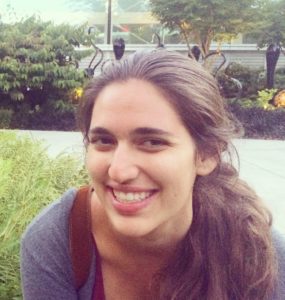Education Programming Coordinator: Rachel Aronson
 Rachel Aronson is the Education Programming Coordinator for Freshkills Park. She loves spending time with kids and being outside, and she is passionate about improving access to parks in urban spaces. Rachel has worked as a classroom teacher, environmental educator, and manager of the Hazon Seal of Sustainability, a sustainability program for organizations. She has a Masters of Science in childhood education from Hunter College and a Bachelor of Arts in cultural anthropology and environmental studies from the University of Vermont and is a certified elementary school teacher.
Rachel Aronson is the Education Programming Coordinator for Freshkills Park. She loves spending time with kids and being outside, and she is passionate about improving access to parks in urban spaces. Rachel has worked as a classroom teacher, environmental educator, and manager of the Hazon Seal of Sustainability, a sustainability program for organizations. She has a Masters of Science in childhood education from Hunter College and a Bachelor of Arts in cultural anthropology and environmental studies from the University of Vermont and is a certified elementary school teacher.
What are you working on, and why do you think it’s interesting/important?
I am planning and leading tours of Freshkills Park for schools, universities, and community groups. I’m also developing STEAM lessons for our Mobile Lab to provide hands-on opportunities for visitors to engage with the park. Because Freshkills Park is opening in stages, guided tours are the only way for visitors to see parts of the park that are ordinarily closed to the public. Visiting the park is a great opportunity to learn about ecology, sustainability, and New York City history. Plus, it’s a beautiful place to spend an afternoon.
What drew you to Freshkills Park?
As an educator, I’ve taught that “there’s no such place as away.” We know that the things we throw out go somewhere, and that place, for over 50 years, was the Fresh Kills Landfill. Visiting Freshkills Park today helps us reflect on our relationship to waste and think creatively about ways to reduce, reuse, and recycle. It is an incredible place for education and action towards sustainability.
What is your favorite topic surrounding Freshkills Park and why?
Freshkills Park contains roughly 150 million tons of waste from the New York City area, yet it is being turned into Staten Island’s biggest park. Native species are returning to the area. I find that transformation very hopeful. As the climate changes and ecosystems are damaged because of human habits of waste and consumption, it’s important to have models of landscape regeneration and regrowth.
What is your favorite color?
Blue.




